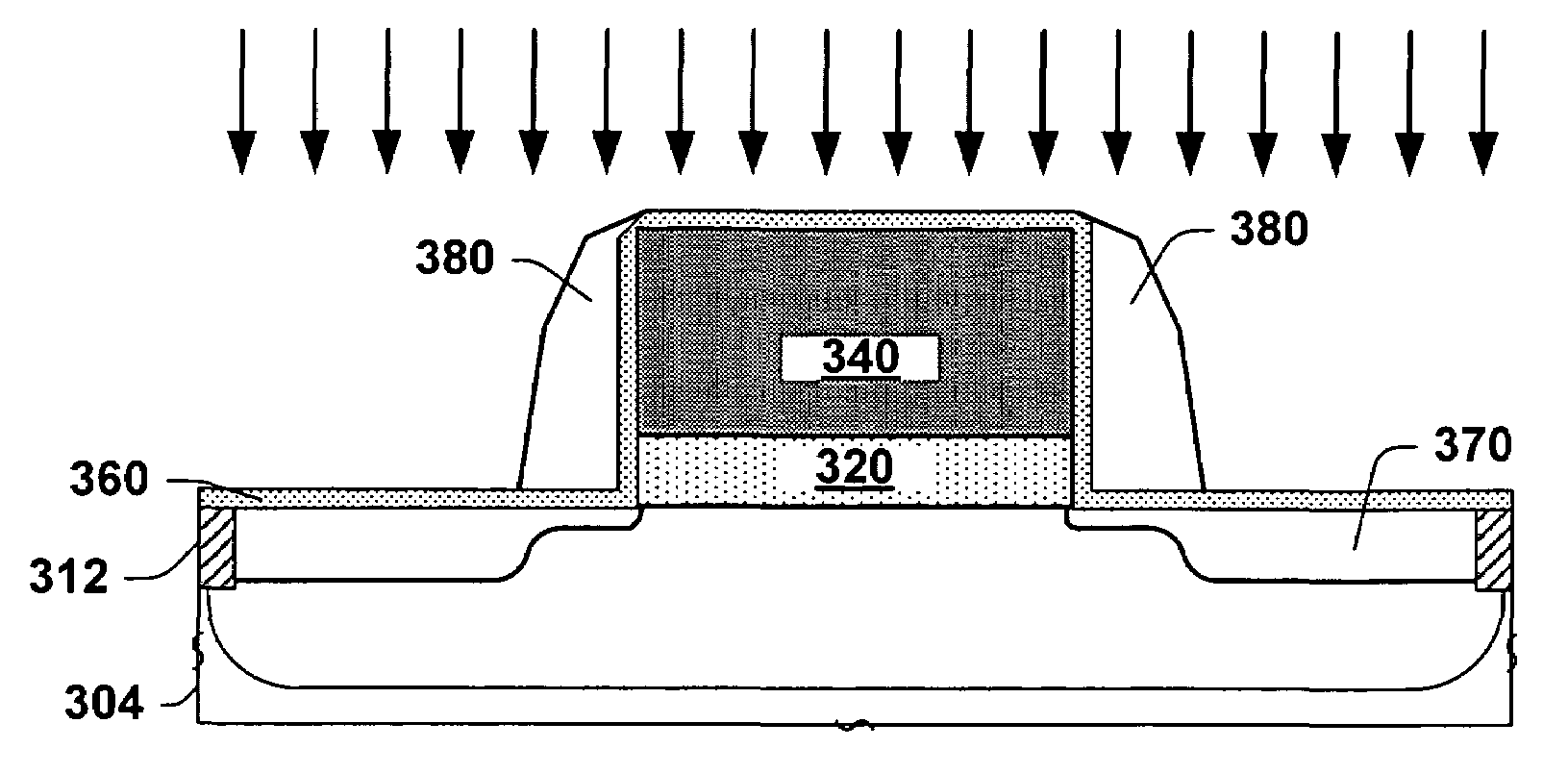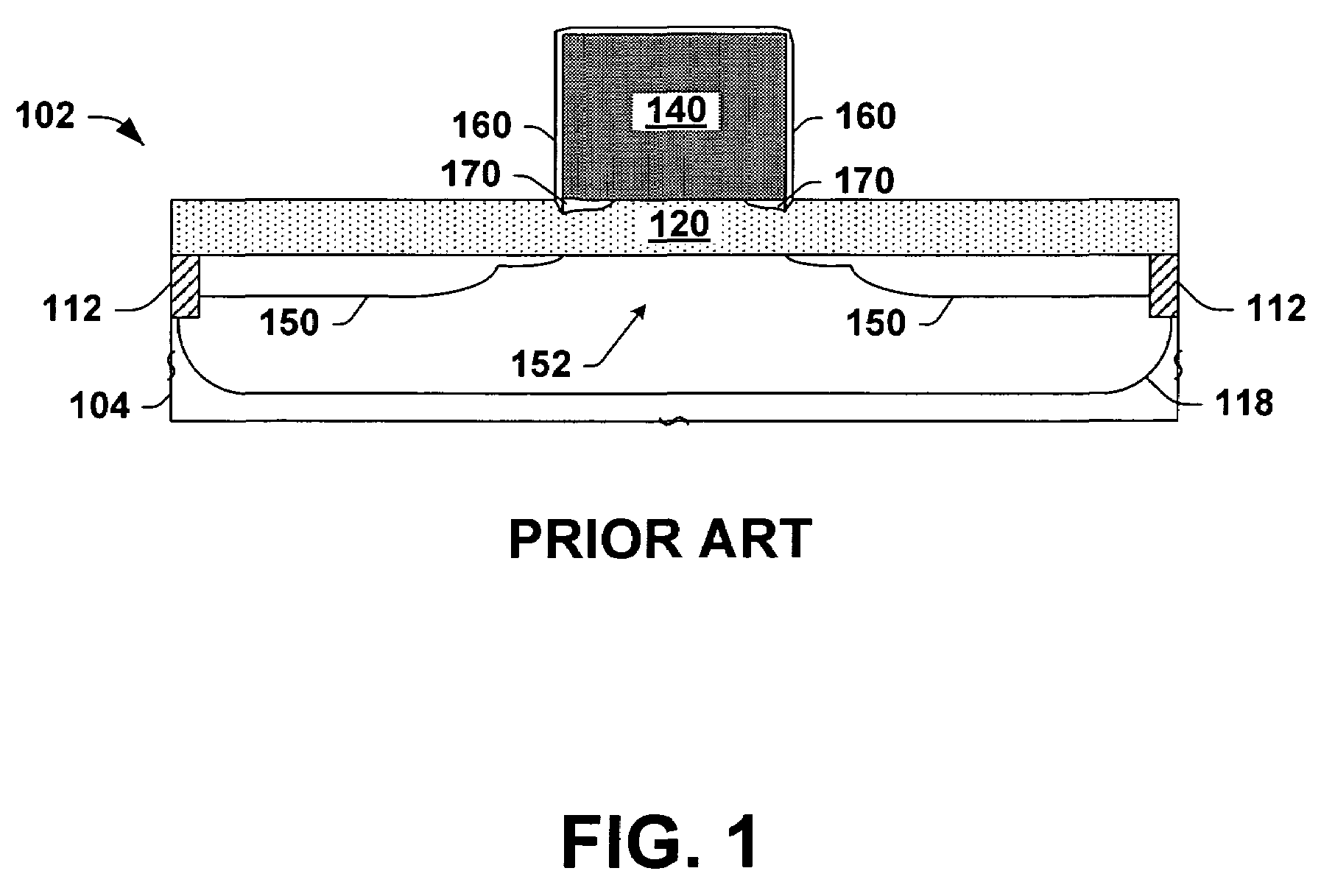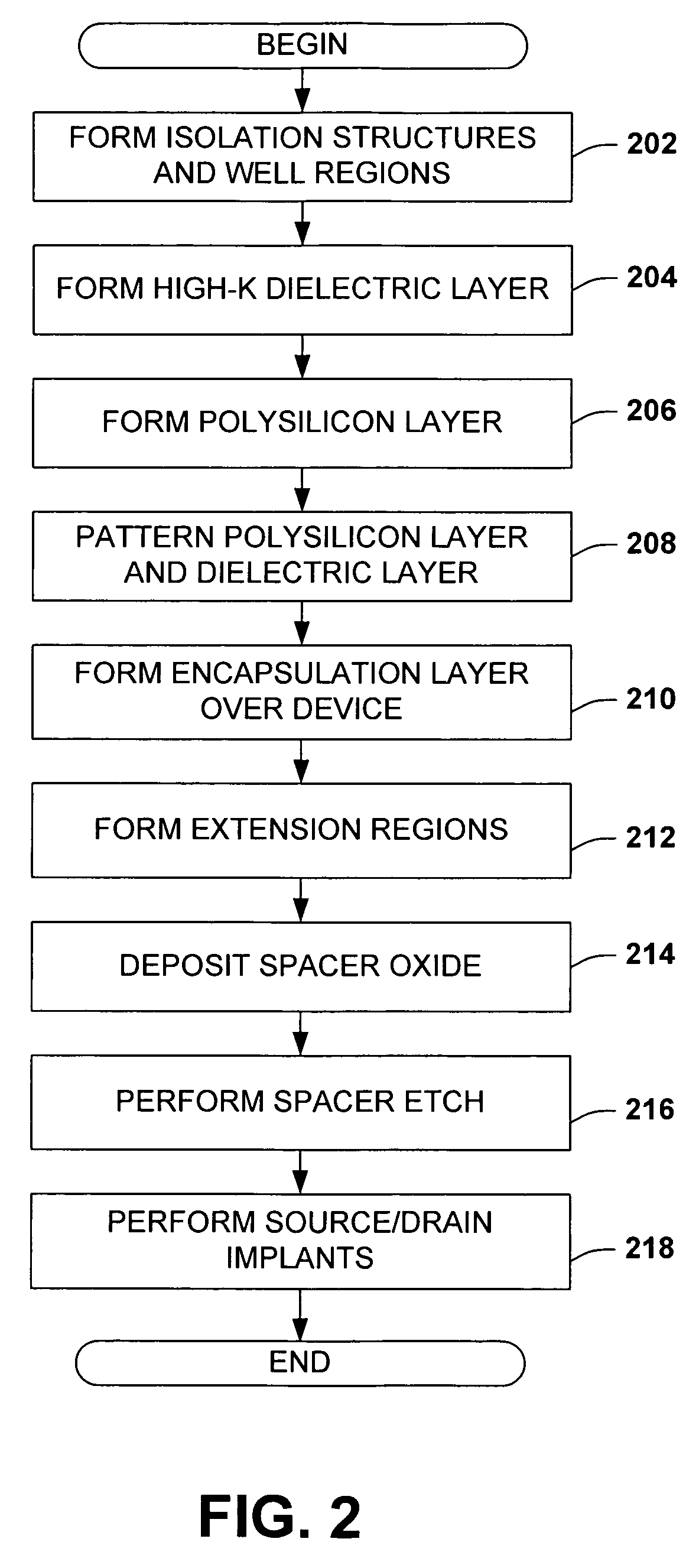Method for integrating high-k dielectrics in transistor devices
a technology of high-k dielectrics and transistors, applied in the field of semiconductor devices, can solve the problems of large gate tunneling leakage currents, limited ability to form thin oxide films with uniform thickness, and electrical and physical limitations to reduce the thickness of siosub>2 /sub>gate dielectrics, so as to facilitate semiconductor fabrication and mitigate defects in high-k dielectric layers. , the effect of reducing the risk of contamination
- Summary
- Abstract
- Description
- Claims
- Application Information
AI Technical Summary
Benefits of technology
Problems solved by technology
Method used
Image
Examples
Embodiment Construction
[0026]One or more implementations of the present invention will now be described with reference to the attached drawings, wherein like reference numerals are used to refer to like elements throughout, and wherein the devices and structures illustrated in the figures are not necessarily drawn to scale.
[0027]The present invention provides systems and methods that facilitate semiconductor fabrication by integrating high-k dielectric layers into a process flow. The invention removes portions of deposited high-k dielectric layers not below gates (e.g., source / drain regions) and covers exposed portions (e.g., sidewalls) of high-k dielectric layers during fabrication with an encapsulation layer, which mitigates defects in the high-k dielectric layers and contamination of process tools. The encapsulation layer can also be employed as an etch stop layer and, at least partially, in comprising sidewall spacers.
[0028]Semiconductor fabrication processes for conventional metal oxide semiconductor...
PUM
 Login to View More
Login to View More Abstract
Description
Claims
Application Information
 Login to View More
Login to View More - R&D
- Intellectual Property
- Life Sciences
- Materials
- Tech Scout
- Unparalleled Data Quality
- Higher Quality Content
- 60% Fewer Hallucinations
Browse by: Latest US Patents, China's latest patents, Technical Efficacy Thesaurus, Application Domain, Technology Topic, Popular Technical Reports.
© 2025 PatSnap. All rights reserved.Legal|Privacy policy|Modern Slavery Act Transparency Statement|Sitemap|About US| Contact US: help@patsnap.com



